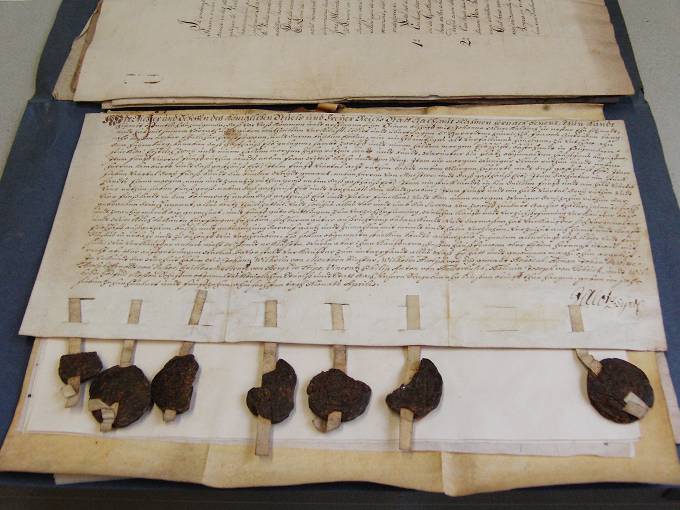Regardless of the chosen research method, civil records and church registers provide an essential source in the beginning phases of the family research. As previously mentioned, churches before January 1, 1876, possessed a monopoly on all baptism, marriage, and death records. For this reason, it is apparent that any research done before this time period should explore these records. In conclusion, family research basically consists of archive research (more on this in our blog post on Archive Research within Geneology or the video following this paragraph).
The genealogist must know the regional history
For genealogists, it is essential to inquire about relevant knowledge of the region’s history. Once a genealogist possesses adequate knowledge of the region, they should be able to form a general understanding of the circumstances in which your ancestors lived and even classify territories of nobility that may have served important in that time. From this, genealogists are able to draw the most accurate conclusions for your research with reference to relevant archive material.
Pro Heraldica’s genealogist network covers all of Europe and North America
Pro Heraldica has a network of almost 3000 genealogists spread across the continents of Europe and North America. This enables us to have genealogists in almost all areas of the western world and gives us a professional reference to the relevant regional history for each area of research. This includes the accessibility to on-site archives (church registers, registry offices) of the relevant area.
The advantages of maintaining a dense genealogy network:
-
-
- Family researchers in almost every area in Europe and North America
- short distances to relevant data
- no difficulties with language barriers
- Knowledge of the historical framework
- direct access to a plethora of archives
Family research beyond the 30 Years War (1618-1648)
Half of all family research cannot be researched beyond the 30 years war. The reason for this is quite simple: The 30 years war not only destroyed the landscape of Germany but also dismantled almost all of its archives. Many, if not most, documents were destroyed during this time.
Unfortunately, our genealogical research only reaches beyond the 16th century in extremely rare cases. Such cases mostly arise if the researched family had a relatively high social standing and their archives were, therefore, better guarded, preserved, and documented than those of lower classes. To put this into perspective, even noble families have difficulty in finding a genealogical trace that goes beyond the 15th or 14th century.
Limits of Private Genealogy
We would like to point out some difficulties and obstacles that may arise in the context of archive research. The following points could arise for private genealogists in the course of their work:
- To the one part, not all archives in regard to an individual’s family are accessible or known.
- Also, some archives have long waiting times, and only about half of all genealogical documents and sources are properly recorded in central archives and registries.
- The majority of relevant information is still on-site in the respective communities and regions.
- Many parish archives are meanwhile reprehended so that access to the data can be extremely lengthy and difficult.
- In addition, most manuscripts are handwritten and usually require the ability to read Kurrent, Latin, and Old Latin.
Please refer to our blog “7 Common Mistakes made in Family Research” to learn more about the do’s and dont’s of Geneology.










